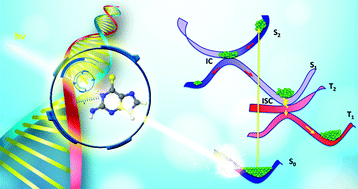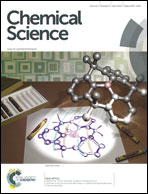Competing ultrafast intersystem crossing and internal conversion: a time resolved picture for the deactivation of 6-thioguanine†
Abstract
In this paper we simulate the deactivation dynamics of photoexcited 6-thioguanine, a cytotoxic analogue of the canonical DNA/RNA base guanine, using a direct surface hopping dynamics approach. Our aim is to investigate the mechanism for triplet population, which was found to take place on a similar time scale as internal conversion. The surface hopping calculations were based on potential energy surfaces and couplings obtained on the fly using a semiempirical Hamiltonian, reparameterized on accurate ab initio data. We show that for the full description of the deactivation dynamics of 6-thioguanine, it is important to take into account both the dynamic and the spin–orbit couplings. The main deactivation pathway involves the sequence of ultrafast radiationless transitions S2 → S1 → T2 → T1. The very efficient population and long lifetime of the final T1 state, from where singlet oxygen is generated, would explain the high phototoxicity of the nucleotides of 6-thioguanine in DNA. To our knowledge, this is the first nonadiabatic dynamics simulation for a system showing strong spin–orbit couplings (due to the presence of a third row atom, sulfur) and a complex pattern of intermultiplet crossings.


 Please wait while we load your content...
Please wait while we load your content...